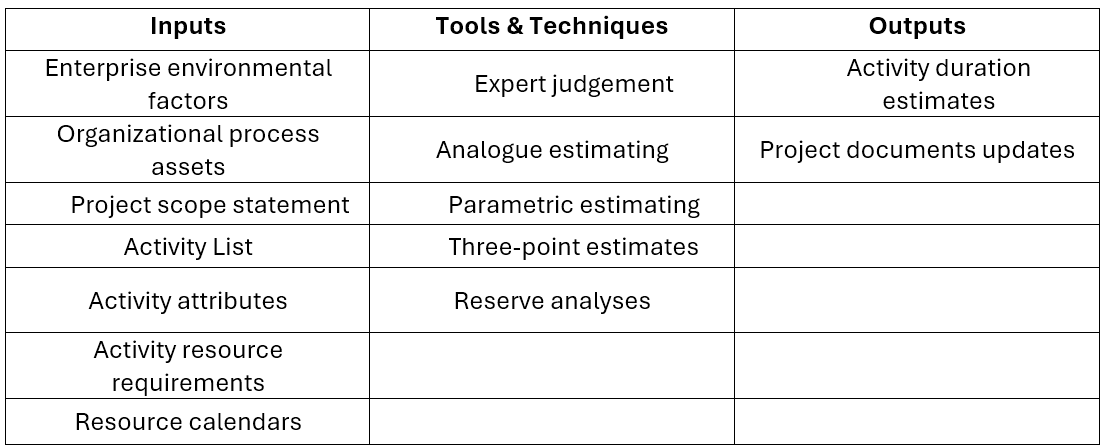
Project Time Management in VT Industry
Effective Time Management in the Vertical Transportation (Elevator and Escalator) Projects is vital for ensuring safety, cost efficiency, and the satisfaction of all stake-holders including the customers. Timely execution prevents delays, controls costs, and ensures thorough safety checks. It facilitates effective resource allocation, coordination with other trades, and adherence to regulatory requirements, ultimately ensuring high-quality outcomes.
Project Time Management involves planning, scheduling, monitoring, and controlling all project activities. Key tactics for effective project time management is provided in this article, along with best practices and insights to assist teams and project managers / engineers in completing tasks quickly and successfully. The article is drafted keeping in mind the guidelines from Project Management Institute (PMI).
The Importance of Time Management in VT Projects:
Time management is one of the core components of project management. It directly impacts the project’s success, affecting cost, quality, and stakeholder satisfaction. Poor time management can lead to missed deadlines, cost overruns, and a compromised project outcome. Therefore, mastering time management is essential for any project manager.
- Define Activities
- Sequence Activities
- Estimate Activity Resources
- Estimate Activity duration
- Develop Schedule
- Control Schedule
In some projects, especially with smaller scope, defining activities, sequencing, estimating activity resources, estimating activity duration and develop schedule are viewed as a single process. However, processes from define activities to develop schedule shall be done in sequence.
Define Activities:
This process involves taking the work packages created in the WBS and breaking them down further in order to reach the activity level.
Activity level is small enough to estimate, schedule monitor and manage, these activities are then sequenced in the next process.

Ensure that project goals are Specific, Measurable, Achievable, Relevant, and time bound. Clearly define project scope to avoid scope creep, which can derail timelines.
Sequence Activities:
In order to analyze the project timeline, it is important to have a clearly defined sequence of activities. For example, before installation, shaft readiness should be determined. Then, during elevator installation, starting from template, brackets, rail hoisting and other installation activities with allocated time, is important. After installation, customer-related works such as entrance grouting and power availability dates should be agreed to execute T&C on timely basis.
The following practices have positive impact to achieve project timeline within targeted dates.
- Work Breakdown Structure (WBS): Break down the project into smaller, manageable tasks and subtasks.
- Gantt Charts: Use Gantt charts to visualize the project timeline and track progress.
- Critical Path Method (CPM): Identify the critical path to determine the sequence of essential tasks that directly impact the project completion date.
Estimate Activity Resources:
Expert Judgment: Leverage the experience of team members and subject matter experts to make realistic time estimates.
Analogous Estimating: Use historical data from similar projects to inform time estimates.
Three-Point Estimating: Calculate optimistic, pessimistic, and most likely time estimates to provide a range of possible outcomes.
Resource Planning: Identify and allocate the necessary resources, including personnel, equipment, and materials.
Resource Leveling: Adjust the project schedule to address resource constraints and avoid overallocation.
Estimate Activity Duration:
Here the network diagram is updated by estimating duration for each activities.
The activity duration estimating process attempts to estimate the work effort and number of work periods needed to complete each schedule activity.
A person or team most familiar with work of the project shall estimate duration to make it more accurate.
All data and assumptions used for estimation shall be documented for future analysis (remember this, we need this information during risk management process).

Develop Schedule:
- Task Management Tools: Utilize software tools like Asana, Trello, or Microsoft Project to assign tasks, set deadlines, and track progress.
- Collaboration Platforms: Implement platforms like Slack or Microsoft Teams to facilitate communication and collaboration among team members.
Control Schedule:
1-Implement a Robust Monitoring and Control Process
- Regular Status Meetings: Hold regular meetings to review progress, address issues, and adjust plans as necessary.
- Performance Metrics: Use key performance indicators (KPIs) to measure progress and identify potential delays.
2-Risk Management
- Risk Identification: Identify potential risks that could impact the project timeline.
- Risk Mitigation: Develop strategies to mitigate identified risks and minimize their impact on the project schedule.
3-Continuous Improvement
- Lessons Learned: Conduct post-project reviews to identify lessons learned and apply them to future projects.
- Feedback Loop: Encourage continuous feedback from team members and stakeholders to improve processes and time management practices.
Conclusion:
Effective project time management is a critical skill for project managers & engineers, enabling them to deliver projects on time and within scope. By defining clear objectives, developing detailed plans, accurately estimating time, managing resources efficiently, utilizing project management software, implementing robust monitoring and control processes, managing risks, and fostering continuous improvement, project managers can enhance their time management practices and achieve project success.




